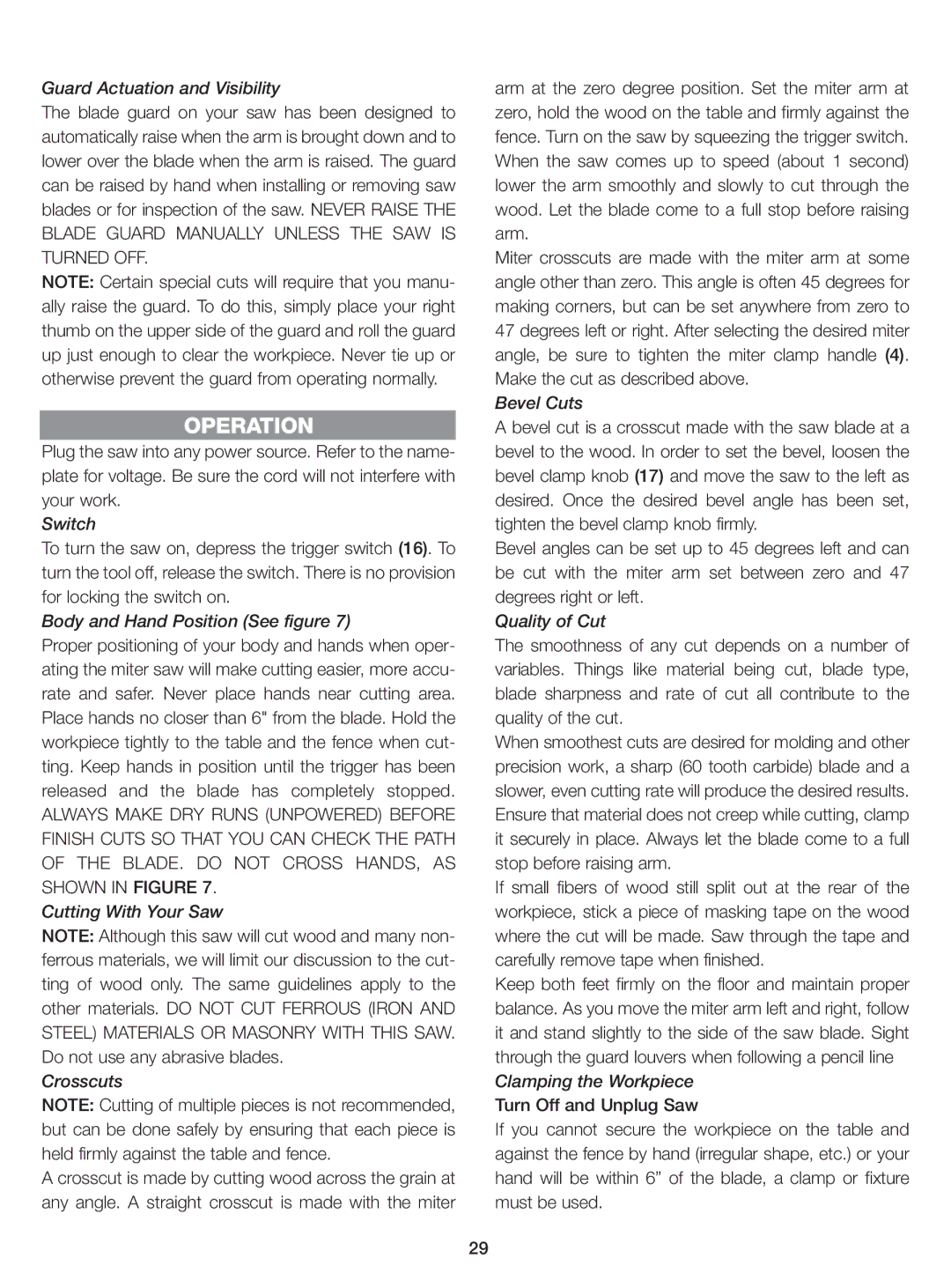BT1400 specifications
The Black & Decker BT1400 is a versatile and powerful tool designed to cater to a wide range of woodworking and crafting needs. As part of Black & Decker’s commitment to innovation and reliability, the BT1400 stands out for its efficiency, user-friendly features, and robust build.One of the main features of the BT1400 is its impressive motor, delivering consistent performance and precise results for various applications. This tool is equipped with a powerful 14-amp motor that provides the torque necessary for cutting through dense materials with ease. The motor’s design ensures minimal vibration, allowing for smoother operation and increased accuracy in cuts.
The BT1400 incorporates advanced technologies that enhance its usability. For instance, it boasts an adjustable speed control, which allows users to select the appropriate speed for their specific task. This feature is particularly useful when working with different materials, as it enables users to achieve optimal cutting results without damaging the workpiece.
Another noteworthy characteristic of the BT1400 is its lightweight yet durable construction. Weighing in at just 10 pounds, it is designed for easy maneuverability, making it ideal for both professionals and DIY enthusiasts. Despite its lightweight nature, the tool is built to withstand rigorous use, ensuring longevity and reliability over time.
Safety is a priority in the design of the BT1400. It features a blade guard that protects users from accidental contact with the blade and ensures that the cutting area remains safe during operation. Additionally, the tool is equipped with non-slip handles that provide a secure grip, further enhancing user safety and control.
The BT1400 also comes with a range of attachments and accessories, including different blade options, which allow users to customize their tool for various tasks. This versatility makes it suitable for a diverse array of projects, from furniture making to detailed craftwork.
In summary, the Black & Decker BT1400 is a powerful, user-friendly, and versatile cutting tool that combines advanced features with robust construction. Its adjustable speed settings, safety mechanisms, and lightweight design make it an excellent choice for anyone looking to tackle woodworking or crafting projects with precision and ease. With the BT1400, users can expect a reliable tool that will meet their cutting needs for years to come.
